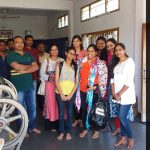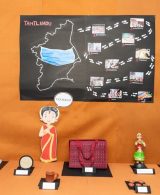Craft archive: online documentation

Craft archive is an initiative by JD Institute of Fashion Technology students to publish information and updates about the crafts of India. Recognising how information available about various crafts are dispersed, students Preeti B. Karia, Niharika K. P., Aruna Kiran, A. Swathi, Niveditha Chowdary, Shreya Agrawal, Supriya Ruth Margaret J. from JD Institute’s Post Graduate Diploma in Fashion Design and Business Management (PGDFDBM) 2019 batch formed the team Zilpa – Craft Chronicles and they wanted to come up with a digital platform that archives knowledge about crafts in one single reliable space. Deriving the name of the website from the stylised version of the Sanskrit word shilpi which means artisan, zilpi is an online archival structure that aims to preserve the historical, cultural, social and creative significance of these — mostly endangered — indigenous craft practices. Starting with the South Indian states of Andhra Pradesh and Telangana, Karnataka, Tamil Nadu and Kerala, the team worked remotely due to the ongoing travel issues that are in place because of the pandemic. As most of the information available about these crafts are on secondary resources such as literature, websites and research papers, the students relied on their classmate’s field visit records to obtain a primary date that is pure and unfiltered.
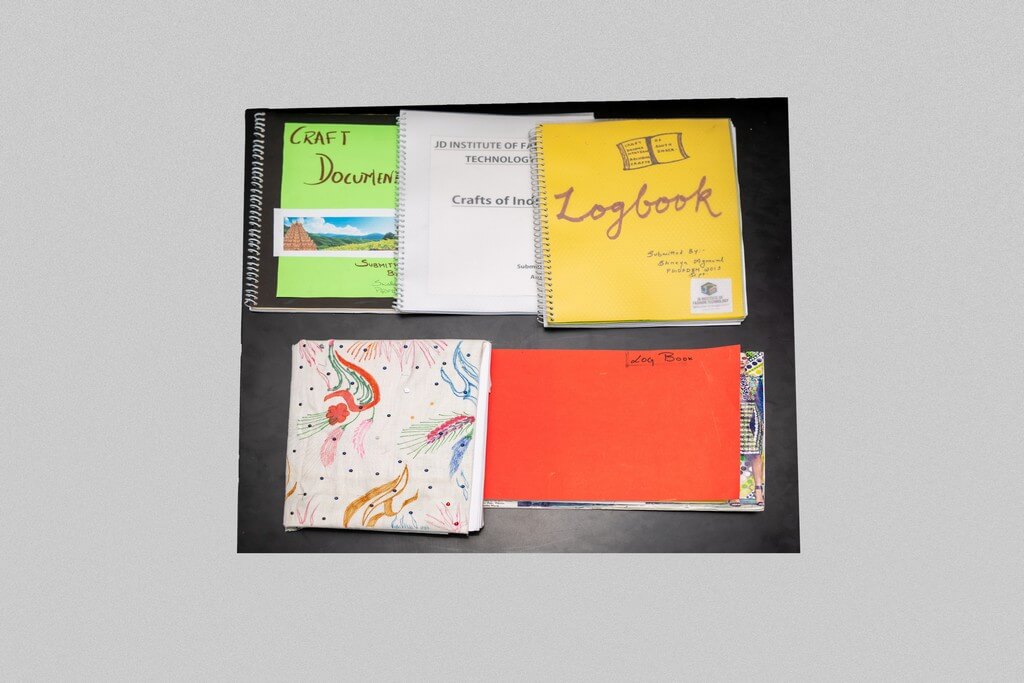
Research and log books
The crafts on the website are classified on various parameters such as raw materials and region, and they cover everything about them including history, relevance, tools, materials, motifs/pattern, design process, execution and the contact details of the artisan who practices it. Due to copyright issues arising from the collection of images from secondary sources, the team had to learn digital and app-based illustration techniques to illustrate the process and look of the craft. Each section therefore contains original illustrations, along with links to references and literature for further readings. Since most craft cluster is located in rural parts of a region which might not have well-connected transportation services, the team located specific areas of these craft cluster on Google Maps along with their supported transportation systems and provided this information under each craft webpage so that anyone who is interested in visiting these artistic communities can find reliable navigation information. The team also worked collaboratively with the rest of the student groups asking them what was missing from the website based on their individual craft research and added this feedback to augment their website experience. The digital platform zilpi further supports the updation through constant revision based on new information and development of the craft. The website is further open to any individual to publish and display their research or creative projects relating to crafts, and provides an updated list of public events, exhibitions and workshops that feature the craft or the artisan that practice it.
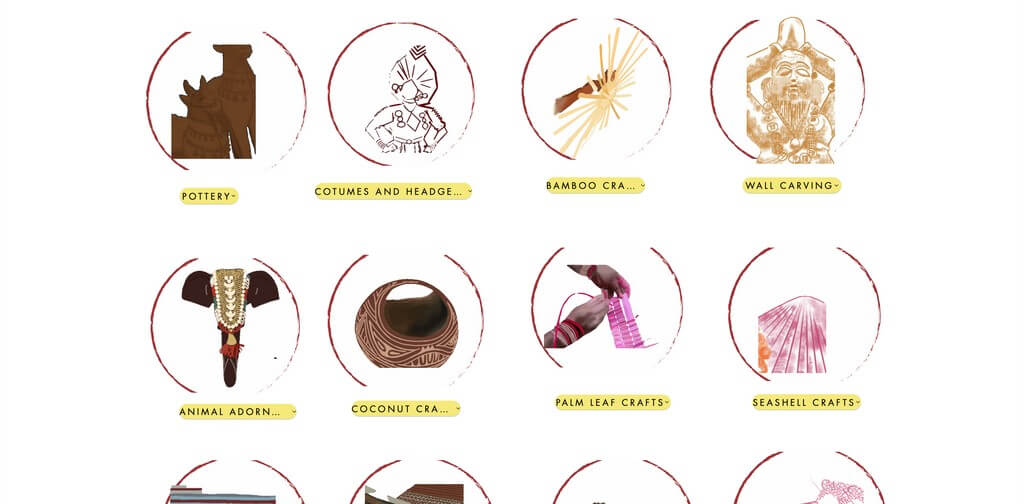
‘Craft Category’ webpage of the website
Reflecting on the team’s experience in creating the craft archive, they were able to articulate how the project has collectively enabled them to understand the difference between art and craft – craft being an intensively process-based practice that is deeply-rooted in heritage, which might not necessarily be the case with art. As research was the starting point of this project, the team was able to realise the lack of a document that has segregated and systematic information about the crafts; this realisation enabled the to understand the importance of this archival project and to conceive it in a way that is reliable. As the knowledge regarding craft is very limited among the public, the team through the project was able to understand various regional crafts that they weren’t aware of, and through illustrations they gained knowledge about the various regional or cultural parameters that inform the motifs/patterns of crafts, as well as the similarities and differences between them. Through this learning process they were also able to analyse how the same raw materials are manipulated in various craft practices in different regions, and what influences their usage. Through the use of digital tools, the students also developed their understanding of using various illustration softwares, creating a website, navigating layout and the placement of work. The experience that the students went through can be concluded in the words of one of the team members, “I wasn’t aware of the crafts in my own regional area; this was a journey of discovery for me. I’ve not taken art for granted, but through this experience I learnt how to appreciate it even more; read about artisan and their struggles; how they came up with designs; how they navigated their practice especially during Covid times; and I developed a kind of empathy and admiration towards them. When we look at the history of these crafts, we are able to realise that most of them developed as a solution to a situation, supporting an innovative methodology, which shows how crafts are a significant medium that arose because of need.”
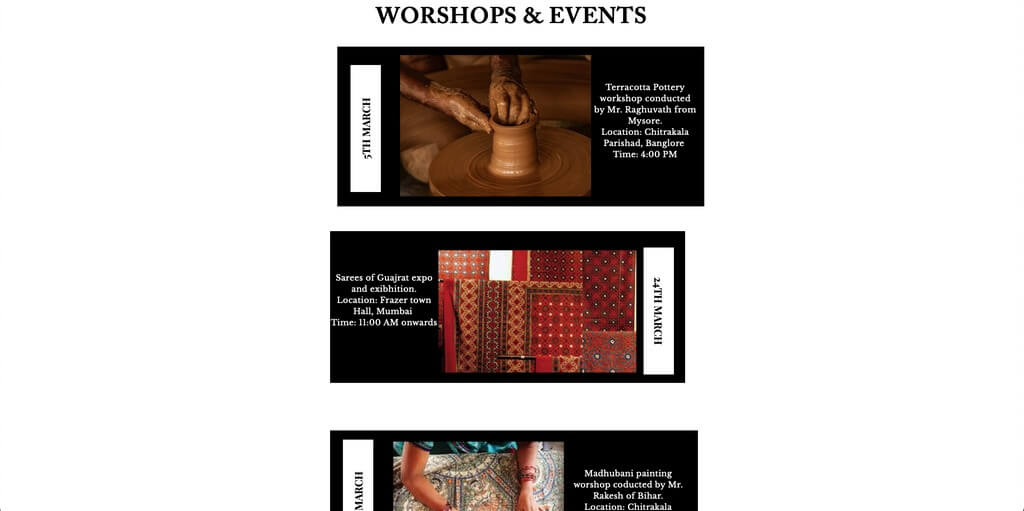
‘Workshops & Events’ webpage of the website
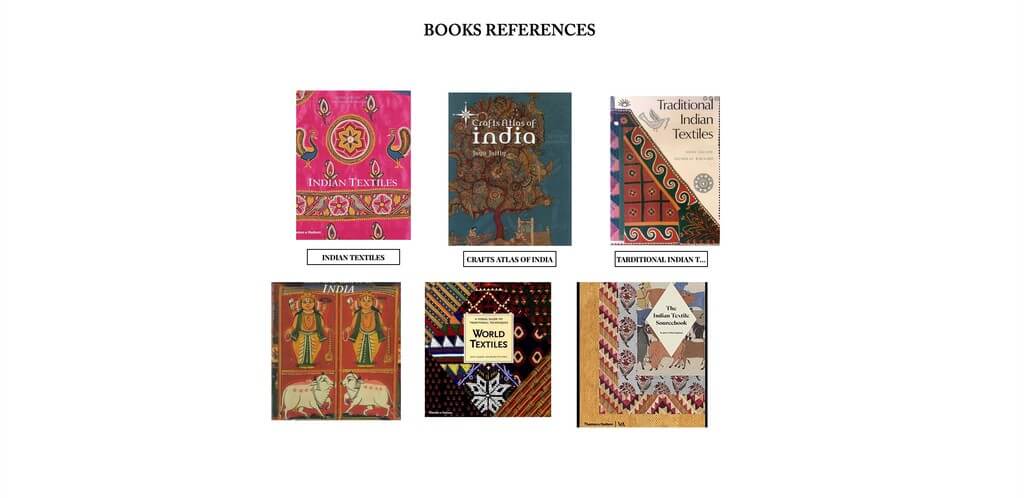
‘Books References’ webpage of the website







